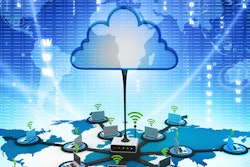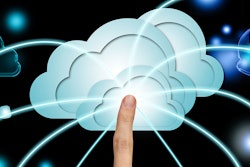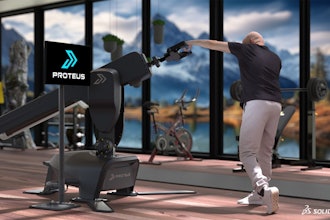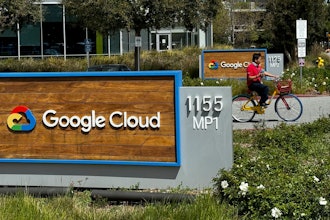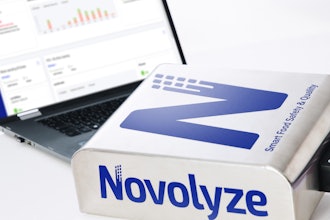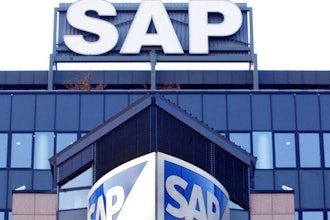
 Marie Jackson
Marie JacksonToday’s cloud-based Enterprise Resource Planning (ERP) technology systems look nothing like the ERP systems of yesterday. Instead of a rigid, difficult-to-use and slow-to-change system, Cloud ERP provides agility, ease of use and speed that encourages innovation. The impact a modern, agile cloud ERP system can make on a food organization is massive.
Right now, many companies across all sectors are taking the jump. According to a recent report by Panorama Consulting, 81 percent of the organizations surveyed were in the process of implementing ERP or had already completed it recently. And of those, 27 percent of those ERP systems were within the cloud. Gartner recently found 47 percent of organizations planned to move their ERP systems to the cloud within the next five years.
What is most interesting about this trend is companies are not moving ERP to the cloud to reduce overall costs. Sure, cost-savings ultimately becomes a factor and added benefit, but the primary driver for companies making this change has to do with new possibilities. Companies are realizing if their ERP system is in the cloud, they can change their market strategy and operate at a speed never achievable before, according to George Lawrie, Vice president at Forrester Research.
Executives find Cloud ERP liberating. They don’t have to think about software anymore. They can instead focus on customers which, if done correctly, enhances the bottom line and overall competitive position in the market.
Why the Cloud?
It is fair to say the business world has fundamentally changed in the past 20-plus years in a radical way. The digital and connected consumer world has extended into the workplace. Employees bring their consumer and digital habits to work, which pushes partners, suppliers, distributors and customers to demand new and more in-depth relationships with businesses. By embracing these digital relationships and new channels, companies can up the ante of their offerings and relationships with customers.
For consumer packaging and foods, this means they can obtain social sentiment data and analyze this big data to gain new insights into customer demand. If ERP systems are not built to take advantage of these new possibilities, ultimately, the company will be stagnating.
Within organizations, replacing a legacy ERP system with a cloud ERP system does something extraordinary — it essentially democratizes data and gives everyone in the organization access to real-time information. This instant data gives employees visibility and understanding of overall costs and the supply chain, such as status updates on POs, invoices, deliveries, supplies and shipments. But it also gives employees big picture data such as the cost to serve customers, promotion yields, success of new product introductions, etc. This readily available information helps leadership teams make swift and smart business decisions.
Crisis Averted
A good example to grasp how powerful cloud ERP can be for food manufacturers is reviewing a scenario that is at the top of crisis lists for most food manufacturers — how to respond immediately and effectively to food contamination or spoiled food.
With some cloud ERP systems, the ability to instantaneously trace tainted or spoiled food products is available today. We know first-hand our food manufacturing customers see tremendous value in this benefit. If a food contamination was to happen, the manufacturer can immediately find out the type of product impacted and have instant status to its specific location — as well as a detailed history of everywhere it has been leading up to the present moment.
Another huge benefit of cloud ERP for the food industry is the way it has changed food distribution. The goal of any well-run distribution organization is to boost margins by mapping supply and demand as accurately as possible to avoid excess inventory. For food companies dealing with a lot of disparate customers that need delivered goods, Cloud ERP can be a game changer.
For example, take the process of getting soda bottles into vending machines. The old way of tackling this job was pretty simple — load up the truck and make the visits. Sometimes the truck has enough supplies — and sometimes it doesn’t. If the numbers did end up correlating, it meant someone spent a good deal of time communicating with numerous customers to get the exact numbers required to fulfill those machines. With cloud ERP, the vending machines become sophisticated data endpoints that communicate directly with the ERP system, which in turn connects to mobile devices used by truck drivers. Now distributors can be much more precise and efficient because machine endpoints tell them exactly what and how much needs to be filled and where.
Cloud Challenges
The business benefits of cloud ERP become obvious pretty quickly. Yet with any positive gain, hurdles need to be cleared to reach success. Unlike the old days of complicated, timely and rigid legacy installments, cloud ERP implementations can be achieved very rapidly, often only within a few months.
The majority of the challenges for companies today with cloud ERP implementations are related to the internal company organization prior to installation. The organizational up-front work is the biggest time sink. Yet if it done correctly with a little planning beforehand, companies can still see a cloud ERP implemented within months.
Here are five tips that can make the data migration process run smoothly:
1. Clear out the Clutter — This is the ideal time to clean company data and re-organize how it is stored. Prior to the data migration process, take the time to identify only active data needed — remove the old data that the company doesn’t need to operate.
2. Prioritize Master Data — Begin with master data, which includes customers, financials, vendors, suppliers and bill of materials data (or core item data). These data sets are the essentials to the business and will need to be moved.
3. Identify Open Transactional Info — Determine the open transactional data required to operate, such as open sales orders, invoices and POs — only move what is necessary and currently open.
4. Find out Migration Limits — The beauty of the cloud is it’s always up, and purchasing new hardware or databases is a thing of the past — along with paying for ongoing maintenance and IT resources. The cloud manages itself and is a shared platform. Though, when uploading data into the cloud, there are limits on how much data can be moved at one time (this prevents a sluggish network by excessive processing from one single company). Therefore, before finalizing the migration timeline, make sure the cloud provider has provided the migration data limits. This step will ensure the timeline is accurate and there are no surprises.
5. Set Expectations — More than half of the data moved in a cloud ERP migration is related to business units, which means the prep work prior is a collective effort. The benefits of cloud ERP must be communicated to employees before the project kicks off to ensure the enthusiasm and commitment from employees can be maintained. Employees will be much more eager to cleanse and organize their departmental data if they understand the upside for them.
Another perceived challenge by some considering the cloud is ensuring data security with cloud systems. When the cloud first emerged 10 years ago, security was an understandable concern. But the cloud has undoubtedly proven itself as a safe and trusted solution based on the impressive security track record of leading cloud companies. According to a recent Morar Consulting study, 78 percent of IT executives surveyed believe the cloud is secure. Think of it this way — if a person has $10,000 in cash, do they typically feel safer keeping it at home or in the bank? The bank has the appropriate system and security built around it — similar to the cloud.
Freedom to Innovate
Cloud ERP is being deployed at rapid rates across all sectors for good reason, but as mentioned earlier, reducing costs is not the primary reason. The driver is the freedom to innovate.
Business processes demand a cloud ERP solution that can change and evolve as quickly as internal business processes are revised, refreshed or replaced entirely. Depending on the system selected, cloud ERP systems can have intuitive user experiences and can be updated with clicks rather than code so people across areas of the business can improve processes and manage changes quickly based on business needs.
If companies are always thinking about their processes and trying to fit their ideas into a rigid ERP system, innovation is bound to suffer. With dated ERP systems, companies risk having the cost of executing a new strategy becoming very high, where ideas die before they ever see the light of day.
With cloud ERP, companies can finally pursue ideas as they are generated and they are much more likely to create new products, go after new markets, and establish closer and more lucrative relationships with their customers.





